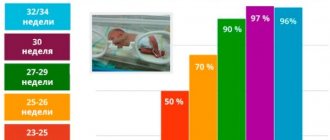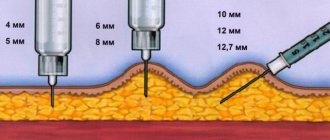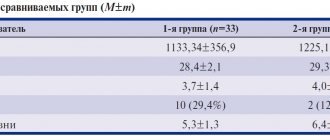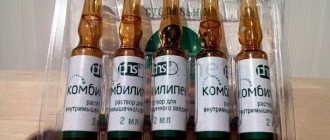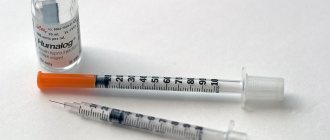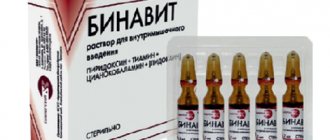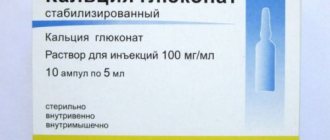pharmachologic effect
Ascorbic acid (vitamin C) is not formed in the human body, but comes only from food. Pharmacological effects: in quantities significantly exceeding the daily requirement (90 mg), it has almost no effect, with the exception of the rapid elimination of symptoms of hypo- and vitamin deficiency (scurvy). Physiological functions: is a cofactor in some hydroxylation and amidation reactions - transfers electrons to enzymes, providing them with a reducing equivalent.
Participates in the hydroxylation reactions of proline and lysine residues of procollagen with the formation of hydroxyproline and hydroxylysine (post-translational modification of collagen), the oxidation of lysine side chains in proteins with the formation of hydroxytrimethyllysine (in the process of kartinite synthesis), the oxidation of folic acid to folinic acid, the metabolism of drugs in liver microsomes and hydroxylation dopamine to form norepinephrine.
Increases the activity of amidating enzymes involved in the processing of oxytocin, antidiuretic hormone and cholecystokinin. Participates in steroidogenesis in the adrenal glands. The main role in tissues is participation in the synthesis of collagen, proteoglycans and other organic components of the intercellular substance of teeth, bones and capillary endothelium.
Pharmacological properties
Pharmacodynamics.
Ascorbic acid (vitamin C) is a water-soluble vitamin that promotes optimal tissue metabolism. It takes an active part in redox reactions, forming a hydrogen proton transfer system with dehydroascorbic acid, exhibiting antioxidant properties, thereby ensuring the stability of cell membranes. Takes part in the synthesis of the main substance of the connective tissue of the vascular wall, thus preventing the development of hemorrhagic diathesis. It is not synthesized in the human body. With insufficient intake of ascorbic acid from food, bleeding of the gums and mucous membranes develops. It takes part in glucose metabolism, cholesterol catabolism, and the synthesis of steroid hormones. During stress reactions, the content of ascorbic acid in the body, and in the tissue of the adrenal glands in particular, decreases significantly, which confirms the participation of ascorbic acid in adaptation reactions. Capable of having an antianemic effect due to its effect on iron metabolism. Restores trivalent iron to divalent iron, which is transported in the bloodstream.
Pharmacokinetics.
Ascorbic acid after parenteral administration easily penetrates into leukocytes, platelets, and then into all tissues; accumulates mainly in organs with an increased level of metabolic processes, in particular in the tissues of the adrenal glands. It is found in tissues both in a free state and in the form of compounds. It is excreted from the body in the urine both unchanged and in the form of metabolites.
Drinking alcohol and smoking accelerate the destruction of ascorbic acid (conversion into inactive metabolites), sharply reducing its reserves in the body.
Clinical characteristics.
Pharmacokinetics
Communication with plasma proteins - 25%. The normal concentration of ascorbic acid in plasma is approximately 10 - 20 μg/ml. Easily penetrates into leukocytes, platelets, and then into all tissues; the highest concentration is achieved in the glandular organs, leukocytes, liver and lens of the eye; penetrates the placenta. The concentration of ascorbic acid in leukocytes and platelets is higher than in erythrocytes and plasma. In deficiency states, leukocyte concentrations decline later and more slowly and are considered a better measure of deficiency than plasma concentrations.
Metabolized primarily in the liver into deoxyascorbic acid and further into oxaloacetic acid and ascorbate-2-sulfate.
It is excreted by the kidneys, through the intestines, with sweat, breast milk unchanged and in the form of metabolites. When high doses are prescribed, the rate of elimination increases sharply. Smoking and drinking ethanol accelerate the destruction of ascorbic acid (conversion into inactive metabolites), sharply reducing reserves in the body. Excreted during hemodialysis.
Ascorbic acid
Dosage form
Powder for solution for oral administration
Composition per package
Ascorbic acid – 2.5 g
Description
White crystalline powder, odorless, sour taste
Pharmacotherapeutic group
Vitamin
ATX code:
A11GA01
Pharmacological properties
Pharmacodynamics
Ascorbic acid (vitamin C) is not produced in the human body, but comes only from food. It is a cofactor in some hydroxylation and amidation reactions - it transfers electrons to enzymes, providing them with a reducing equivalent. Participates in the reactions of hydroxylation of proline and lysine residues of procollagen with the formation of hydroxyproline and hydroxylysine (post-translational modification of collagen), oxidation of lysine side chains in proteins with the formation of hydroxytrimethyllysine (in the process of kartinite synthesis), oxidation of folic acid to folinic acid, metabolism of drugs in liver microsomes and hydroxylation dopamine to form norepinephrine. Increases the activity of amidating enzymes involved in the processing of oxytocin, antidiuretic hormone and cholecystokinin. Participates in steroidogenesis in the adrenal glands. Restores ferric ions to ferrous ions in the intestines, promoting its absorption. The main role in tissues is participation in the synthesis of collagen, proteoglycans and other organic components of the intercellular substance of teeth, bones and capillary endothelium. In low doses (150-250 mg/day orally) it improves the complexing function of deferoxamine in chronic intoxication with iron preparations, which leads to increased excretion of the latter.
Pharmacokinetics
Absorbed in the gastrointestinal tract (mainly in the jejunum). With an increase in dose to 200 mg, up to 140 mg (70%) is absorbed; with a further increase in dose, absorption decreases (50-20%). Communication with plasma proteins – 25%. Diseases of the gastrointestinal tract (peptic ulcer of the stomach and duodenum, constipation or diarrhea, helminthic infestation, giardiasis), consumption of fresh fruit and vegetable juices, alkaline drinking reduce the absorption of ascorbic acid in the intestine. The normal concentration of ascorbic acid in plasma is approximately 10-20 mcg/ml, body reserves are about 1.5 g when taking daily recommended doses and 2.5 g when taking 200 mg/day. Time to reach maximum concentration (TCmax) after oral administration is 4 hours.
Easily penetrates into leukocytes, platelets, and then into all tissues; the highest concentration is achieved in the glandular organs, leukocytes, liver and lens of the eye; penetrates the placenta. The concentration of ascorbic acid in leukocytes and platelets is higher than in erythrocytes and plasma. In deficiency states, leukocyte concentrations decline later and more slowly and are considered a better measure of deficiency than plasma concentrations.
Metabolized primarily in the liver into deoxyascorbic acid and further into oxaloacetic acid and ascorbate-2-sulfate.
It is excreted by the kidneys, through the intestines, with sweat, breast milk unchanged and in the form of metabolites.
When high doses are prescribed, the rate of elimination increases sharply. Smoking and drinking ethanol accelerate the destruction of ascorbic acid (conversion into inactive metabolites), sharply reducing reserves in the body.
Excreted during hemodialysis.
Indications for use
Treatment and prevention of hypo- and vitamin deficiency C.
State of increased need for ascorbic acid: period of artificial feeding and intensive growth, unbalanced diet, increased mental and physical stress, period of convalescence after serious illnesses, alcoholism, burn disease, febrile state against the background of acute respiratory infections, acute respiratory viral infections; long-term chronic infections, nicotine addiction, stress, postoperative period, pregnancy (multiple, due to nicotine or drug addiction).
Chronic intoxication with iron preparations (as part of complex therapy with deferoxamine).
Idiopathic methemoglobinemia.
Contraindications
Hypersensitivity. When administered in large doses (more than 500 mg) – diabetes mellitus, hypercoagulation, thrombophlebitis, tendency to thrombosis.
Carefully
Hyperoxalaturia, renal failure, hemochromatosis, thalassemia, polycythemia, leukemia, sideroblastic anemia, glucose-6-phosphate dehydrogenase deficiency, sickle cell anemia, progressive malignant diseases, oxalosis, nephrolithiasis.
Use during pregnancy and breastfeeding
The minimum daily requirement for ascorbic acid in the II-III trimesters of pregnancy is about 60 mg.
The minimum daily requirement during breastfeeding is 80 mg.
A mother's diet containing adequate amounts of ascorbic acid is sufficient to prevent vitamin C deficiency in the child.
During pregnancy and breastfeeding, the recommended dosage of ascorbic acid should not be exceeded.
Directions for use and doses
Inside, after eating.
The powder is used to prepare drinks - 2.5 g of powder (contents of one package) per 2.5 liters of water. The solution is taken freshly prepared, in accordance with the dosages suggested below. The prepared solution cannot be stored for long periods of time.
For prevention: adults 50-100 mg (50-100 ml) per day, children from 3 to 6 years old – 25 mg (25 ml) per day; from 6 to 14 years – 50 mg (50 ml) per day; from 14 to 18 years – 75 mg (75 ml) per day.
For treatment: adults 50-100 mg (50-100 ml) 3-5 times a day, children over 5 years old - 50-100 mg (50-100 ml) 2-3 times a day.
During pregnancy and breastfeeding – 300 mg (300 ml) per day for 10-15 days; further – 100 mg (100 ml) per day.
When treating scurvy for adults - up to 1000 mg (1000 ml) per day, for children - up to 500 mg (500 ml) per day.
Chronic intoxication with iron preparations (as part of complex therapy with deferoxamine): adults - 200 mg (200 ml) per day, children under 10 years old - 50 mg (50 ml) per day, children over 10 years old - 100 mg (100 ml) per day day.
Idiopathic methemoglobinemia - at least 150 mg (150 ml) per day.
For adults: maximum single dose – 200 mg, daily dose – 1 g; for children – 50-100 mg/day.
Side effect
From the central nervous system (CNS): headache, feeling of fatigue, with prolonged use of large doses (more than 1000 mg) - increased excitability of the central nervous system, insomnia.
From the urinary system: moderate pollakiuria (when taking a dose of more than 600 mg/day), with long-term use of large doses - hyperoxaluria, formation of urinary stones from calcium oxalate, damage to the glomerular apparatus of the kidneys.
From the digestive system: irritation of the mucous membrane of the gastrointestinal tract, with prolonged use of large doses - nausea, vomiting, diarrhea, hyperacid gastritis, ulceration of the mucous membrane of the gastrointestinal tract.
From the endocrine system: inhibition of the function of the insular apparatus of the pancreas (hyperglycemia, glycosuria).
From the cardiovascular system: thrombosis, with long-term use of large doses - a decrease in capillary permeability (possible deterioration of tissue trophism, increased blood pressure, hypercoagulation, development of microangiopathies).
Allergic reactions: skin rash, skin hyperemia.
Overdose
Symptoms: diarrhea, nausea, irritation of the mucous membrane of the gastrointestinal tract, flatulence, spastic abdominal pain, frequent urination, nephrolithiasis, insomnia, irritability, hypoglycemia.
Treatment: symptomatic, forced diuresis.
Interaction with other drugs
Absorption of ascorbic acid is reduced with simultaneous use of oral contraceptives, acetylsalicylic acid, consumption of fresh fruit or vegetable juices, and alkaline drinks.
Ascorbic acid, when taken orally, increases the absorption of penicillin and iron, reduces the effectiveness of heparin and indirect anticoagulants, and increases the risk of developing crystalluria when treated with salicylates.
When used simultaneously, it reduces the chronotropic effect of isoprenaline.
Long-term use or use in large doses may interfere with the interaction between disulfiram and ethanol.
Barbiturates and primidone increase the excretion of ascorbic acid in the urine.
Reduces the therapeutic effect of antipsychotic drugs (phenothiazine derivatives), tubular reabsorption of amphetamine and tricyclic antidepressants.
special instructions
When using ascorbic acid in high doses, it is necessary to monitor kidney function, pancreas and blood pressure levels.
In patients with high iron levels in the body, ascorbic acid should be used in minimal doses.
Prescribing ascorbic acid to patients with rapidly proliferating and intensively metastasizing tumors can aggravate the process.
Ascorbic acid, as a reducing agent, can distort the results of various laboratory tests (blood and urine glucose, bilirubin, transaminase activity, LDH).
High doses of ascorbic acid increase the excretion of oxalates, promoting the formation of kidney stones.
Ascorbic acid does not have a negative effect on the ability to drive vehicles and perform work that requires an increased speed of psychomotor reactions.
Release form
Powder for solution for oral administration 2.5 g.
2.5 g in heat-sealed bags made of packaging material made from combined materials.
The packages are placed in a group package along with an equal number of instructions for use.
Best before date
3 years. Do not use after the expiration date.
Storage conditions
In a dry place, protected from light, at a temperature not exceeding 25 oC.
Keep out of the reach of children.
Conditions for dispensing from pharmacies
Over the counter.
Indications for use
Treatment of hypo- and vitamin C deficiency (if it is necessary to quickly replenish vitamin C and the impossibility of oral administration). Used for medicinal purposes in all clinical situations associated with the need for additional administration of ascorbic acid, including: parenteral nutrition, diseases of the gastrointestinal tract (persistent diarrhea, resection of the small intestine, peptic ulcer, gastrectomy), Addison's disease.
In laboratory practice: for marking red blood cells (together with sodium chromate Cr51).
Instructions for the use of ascorbic acid in ampoules
Vitamins enter the human body with food and as part of special medications. Special courses of treatment help replenish vital substances. Doctors prescribe vitamin C in ampoules in special cases. The content of ascorbic acid in 1 ml of solution is from 50 to 100 mg. Ampoule volume 1-2 ml. A single administration of the substance should not exceed 200 mg. Injections are given intravenously or intramuscularly.
For face
Professional cosmetology widely uses vitamin C to heal and rejuvenate facial skin. It becomes elastic, wrinkles disappear. Skin saturated with ascorbic acid responds better to cosmetic procedures. It more actively absorbs beneficial substances from moisturizing and nourishing creams and masks. Vitamin C is no less effective for the face if used correctly at home. Under the influence of the substance, the skin is transformed:
- improves complexion;
- rashes disappear;
- cells are actively renewed;
- nutrition of the epidermis (upper layer of skin) is normalized;
- peeling and redness stop;
- capillaries narrow.
To achieve a cosmetic effect, it is recommended to use a specially prepared vitamin mask. It is important to adhere to the following recommendations:
- The most powerful effect is provided by the combination of vitamins A, E, C.
- When mixing components, do not use metal utensils. When interacting with it, ascorbic acid is destroyed.
- Before using the mask, your facial skin must be thoroughly cleansed.
- The mask should not be applied to damaged skin or areas around the eyes.
- Fresh fruits enhance the effect of the mask.
- It is better to make a vitamin mask before bed.
- Apply the solution from the ampoule to the skin of the face, hold for 10 minutes, wipe the face with tonic, apply night cream.
- The liquid form of ascorbic acid is an excellent product for nourishing facial skin. The medicinal solution is used as an independent remedy and in combination with other substances.
- You can use the mask no more than 2 times a week. The procedures are performed in courses, with a 4-5 week break between them. The duration of the course depends on the condition of the skin.
Liquid ascorbic acid with yogurt and sugar can be applied to the skin around the eyes. The composition is applied with a cotton swab after the ingredients have completely dissolved. Pure and mixed formulations must be used with caution. Allergic reactions may occur. Cosmetologists prescribe vitamin C injections along with natural collagen, natural plant extracts, and hyaluronic acid.
If used incorrectly or when preparing homemade masks with ascorbic acid solution, it is not always possible to achieve the desired effect. The main consequences of the “wrong” homemade masks:
- Uselessness. Disappointing but harmless result. This reaction is associated with the wrong choice of base for the mask. Vitamin C has a better effect on the skin when combined with glycerin or propylene glycol.
- Irritations. If the drug is diluted incorrectly with water, the acidity level decreases (pH about 2.2). Ascorbic acid penetrates the epidermis better in an acidic environment (pH 2.8-3.4).
- Spoiled medicine. Ascorbic acid is the active substance. It is destroyed by heat, light, and air, so homemade masks are stored for 1-2 days in the refrigerator in an airtight container.
- Inefficiency. Homemade masks are poor in composition. The effectiveness of vitamin C is higher when used simultaneously with vitamin E and ferulic acid.
- How to find your ancestors and find out your ancestry
- Children's menu for every day
- How to make Mimosa salad: recipes
Vitamin C intramuscularly
To quickly replenish vitamin C deficiency, in some diseases and conditions when the intake of the substance from food, in the form of tablets and powders is impossible, injections of a 5% solution of ascorbic acid are prescribed intramuscularly. The treatment regimen is prescribed by a doctor. It depends on the diagnosis and severity of the patient’s condition. The therapeutic dose is:
| Age category | Maximum single dose | Number of injections | Maximum daily dose |
| Children | 0.6-1.0 ml | 1-2 | 1-2 ml |
| Adults | 1.0-5.0 ml | 1-3 | 20 ml |
Contraindications
Hypersensitivity, with long-term use in large doses (more than 500 mg) - diabetes mellitus, hyperoxaluria, nephrolithiasis, hemochromatosis, thalassemia, glucose-6-phosphate dehydrogenase deficiency.
Carefully
Sideroblastic anemia, urolithiasis.
Use during pregnancy and lactation
During pregnancy and lactation, they are used only if the expected benefit to the mother outweighs the potential risk to the fetus and child. The minimum daily requirement for ascorbic acid in the II-III trimesters of pregnancy is about 60 mg. It should be borne in mind that the fetus can adapt to high doses of ascorbic acid taken by a pregnant woman, and then the newborn may develop ricochet scurvy syndrome. With long-term use of large doses, inhibition of the function of the pancreatic insular apparatus is possible, so it must be regularly monitored during treatment. In patients with high iron levels in the body, ascorbic acid should be used in minimal doses. Ascorbic acid, as a reducing agent, can distort the results of various laboratory tests (the content of glucose, bilirubin in the blood and urine, the activity of “liver” transaminases and lactate dehydrogenase).
Impact on the ability to drive vehicles and operate machinery
During the treatment period, care must be taken when driving vehicles and engaging in potentially hazardous activities that require increased concentration and speed of psychomotor reactions.
Directions for use and doses
Intravenous, intramuscular (slow), adults from 100 to 500 mg (2 - 10 ml of 50 mg/ml solution or 1 - 5 ml of 100 mg/ml solution) per day, for the treatment of scurvy - up to 1000 mg per day.
Children from 100 to 300 mg (2 - 6 ml of 50 mg/ml solution or 1 - 3 ml of 100 mg/ml solution) per day, for the treatment of scurvy - up to 500 mg (10 ml of 50 mg/ml solution or 5 ml of 100 mg/ml solution mg/ml) per day.
To mark red blood cells (together with sodium chromate Cr51), 100 mg of ascorbic acid is injected into a vial with sodium chromate Cr51.
Compound
active ingredient:
ascorbic acid;
1 ml of solution contains ascorbic acid 50 mg or 100 mg;
Excipients:
sodium bicarbonate, sodium metabisulfite (E 223), disodium edetate, water for injection.
Dosage form.
Injection.
Basic physical and chemical properties:
5% solution is a clear, colorless or slightly yellowish liquid; A 10% solution is a transparent liquid from colorless to yellowish.
Pharmacotherapeutic group.
Simple preparations of ascorbic acid. Ascorbic acid (vitamin C). ATX code A11G A01.
Side effect
From the central nervous system: with rapid intravenous administration - dizziness, feeling of fatigue; with long-term use of large doses (more than 1 g) - headache, increased excitability of the central nervous system, insomnia.
From the urinary system: moderate pollakiuria (when using a dose of more than 600 mg/day), with long-term use of large doses - hyperoxaluria, nephrolithiasis (from calcium oxalate), damage to the glomerular apparatus of the kidneys.
From the cardiovascular system: with long-term use of large doses - a decrease in capillary permeability (possible deterioration of tissue trophism, increased blood pressure, hypercoagulation, development of microangiopathies).
Allergic reactions: allergic reactions up to the development of anaphylactic shock.
Laboratory indicators: thrombocytosis, hyperprothrombinemia, erythropenia, neutrophilic leukocytosis, hypokalemia, glycosuria.
Local reactions: pain at the site of intramuscular injection.
Other: with long-term use of large doses (more than 1 g) - inhibition of the function of the insular apparatus of the pancreas (hyperglycemia, glycosuria), with intravenous administration - threat of miscarriage (due to estrogenemia), hemolysis of red blood cells.
Overdose
Symptoms: nephrolithiasis, insomnia, irritability, hypoglycemia.
Treatment: symptomatic, forced diuresis.
Interaction with other drugs
Pharmaceutically incompatible with aminophylline, bleomycin, cefazolin, cefapirin, chlordiazepoxide, estrogens, dextrans, doxapram, erythromycin, methicillin, nafcillin, benzylpenicillin, warfarin.
Increases the concentration of benzylpenicillin and tetracyclines in the blood; at a dose of 1 g/day increases the bioavailability of ethinyl estradiol (including that included in oral contraceptives). Reduces the effectiveness of heparin and indirect anticoagulants.
When used simultaneously with acetylsalicylic acid, the urinary excretion of ascorbic acid increases and the excretion of acetylsalicylic acid decreases.
Increases the risk of developing crystalluria during treatment with salicylates and short-acting sulfonamides, slows down the excretion of acids by the kidneys, increases the excretion of drugs that have an alkaline reaction (including alkaloids), and reduces the concentration of oral contraceptives in the blood. Increases the overall clearance of ethanol, which in turn reduces the concentration of ascorbic acid in the body.
Quinoline drugs, calcium supplements, salicylates, and glucocorticosteroids deplete ascorbic acid reserves when used for a long time.
When used simultaneously, it reduces the chronotropic effect of isoprenaline.
With long-term use or use in high doses, it may interfere with the interaction of disulfiram and ethanol. In high doses, it increases the excretion of mexiletine by the kidneys. Barbiturates and primidone increase the excretion of ascorbic acid in the urine.
Reduces the therapeutic effect of antipsychotic drugs (neuroleptics) - phenothiazine derivatives, tubular reabsorption of amphetamine and tricyclic antidepressants.
